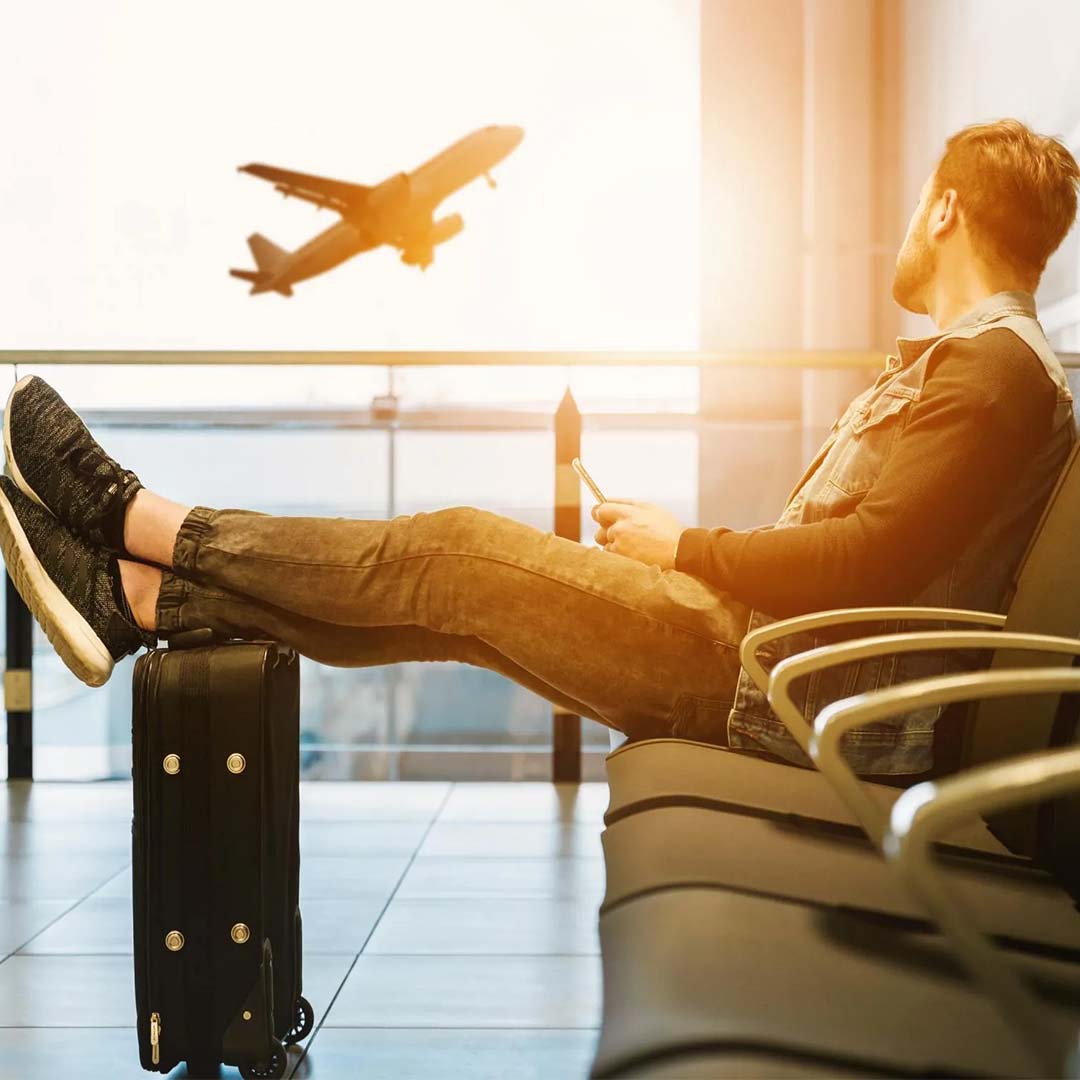Recent Blogs
- What is The Cause For Itchy Varicose Veins?
- Can you travel after Vein Treatment?
- Sclerotherapy An Effective Treatment for Varicose and Spider Veins
- 8 ways to motivate yourself to walk
- Caring for Your Friends’ and Family’s Vein Health
- How ClosureFast Treatment Transforms Vein Health?
- 8 Steps to Prep For Your First Vein Appointment
- Sclerotherapy for varicose veins
- Varithena – FDA-Approved Varicose Vein Treatment
- Some Treatment Options for Saphenous Veins
Published on: 28-Apr-2023

Flying requires long hours of sitting with no space to elevate the legs. That is why patients often find it challenging to fly with varicose veins. But it cannot become a hindrance in your holidays. You can still enjoy vacations and go on business trips.
This
article will guide you about the risks and preventive measures to ensure a safe
flight.
Keep
reading!
Many patients fear getting blood clots or deep vein thrombosis due to flying. However, the condition varies from patient to patient. Though flying has some risks, precautionary measures can improve things.
What are
the Reasons for Complications?
Immobility
Staying
inactive for long hours is a huge risk for patients with varicose veins.
Inactivity doesn’t allow blood to flow properly, which may result in developing
a blood clot.
Cabin
Pressure
Though we
get oxygen due to cabin pressure, the pressure does not equal the amount of
oxygen on the ground. The low level of oxygen can create various complications
in circulatory issues.
Compact
Space
Stretching and elevating the legs is essential for varicose vein patients. Unfortunately, most airplanes do not provide enough space. It is why patients with varicose veins cannot elevate their legs. They experience complications due to poor circulation.
Dehydration
The humidity level inside a plane is low compared to typical indoor conditions. That is why people become dehydrated, and experience reduced blood flow.
Tips to
Decrease the Risk of Complications
Use
Flights Socks or Compression Stockings
Flight socks
or compression stockings apply gentle pressure on the legs. Some flight socks
are specifically designed for varicose vein patients. The purpose of these
socks is to increase blood flow, which in turn reduces the chances of getting a
blood clot.
Wear
Loose Clothing
Tight clothes can restrict blood flow and cause discomfort. Avoid wearing skin-fitted jeans and trousers. Instead, prefer loose bottoms and airy shirts. Since you need to sit for a long, comfortable and loose clothes made from lightweight material are the best option.
Release
Anxiety and Stress
Stress
can make things difficult for varicose vein patients. Therefore, try to relax
with breathing techniques. Breathe in and out, or play white noise to release
anxiety.
Stay
Hydrated
Start
consuming plenty of fluids before the day of your flight. It will keep you
hydrated, and you can get rid of complications. You can also enjoy different
juices on the go!
Pay Extra
for More Leg Room
Don’t
hesitate to pay some extra bucks for extended legroom. Especially if you often
experience cramps and swelling. More space will help you do some leg exercises
and stretching.
In short,
many people fly with varicose veins. Though the risks are undeniable, steps to
cope with the challenges are helpful. Following the above instructions will
make you feel a noticeable difference on your next flight.
To get more tips and learn about the latest treatment plans for varicose veins, book your slot!